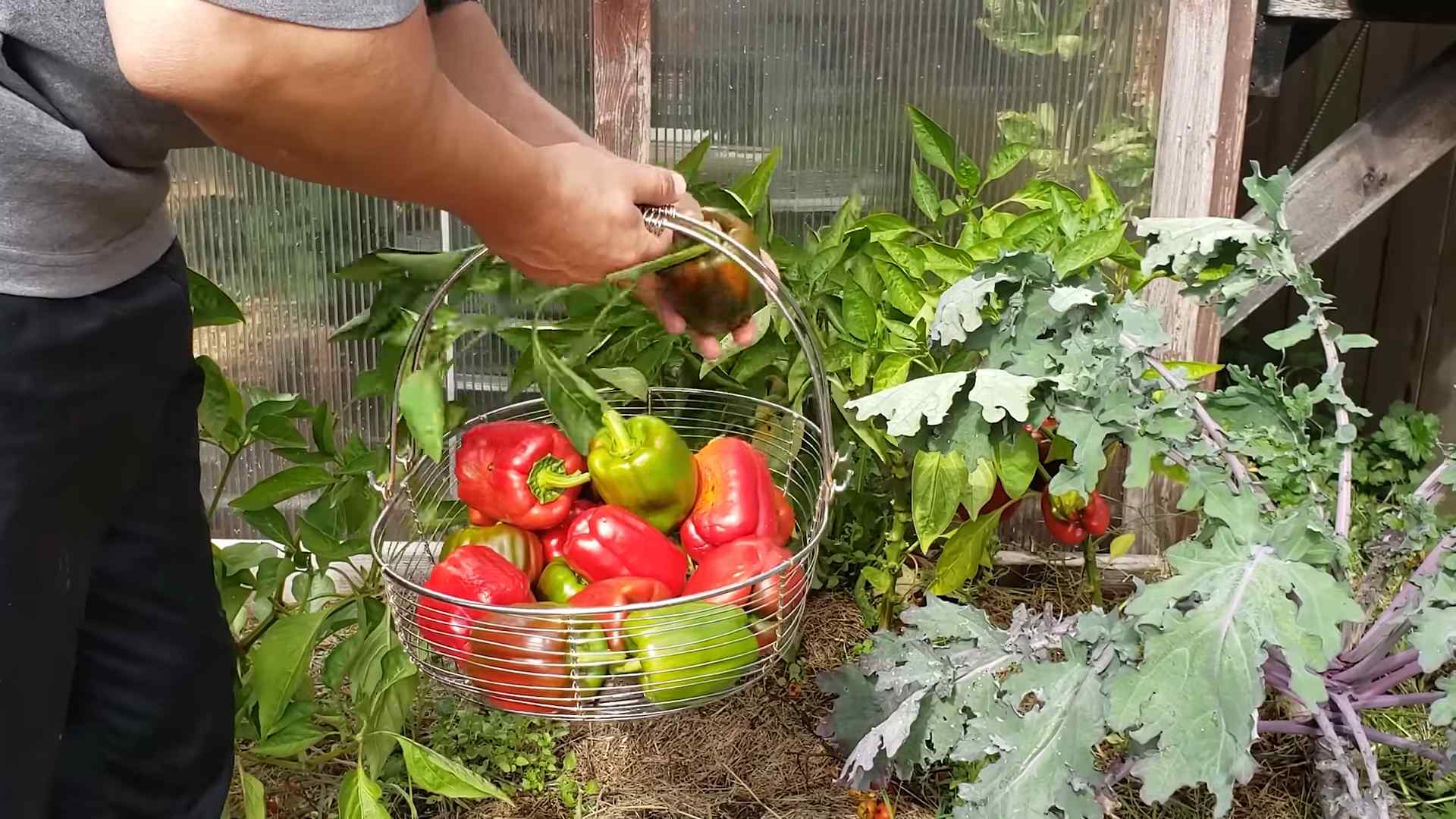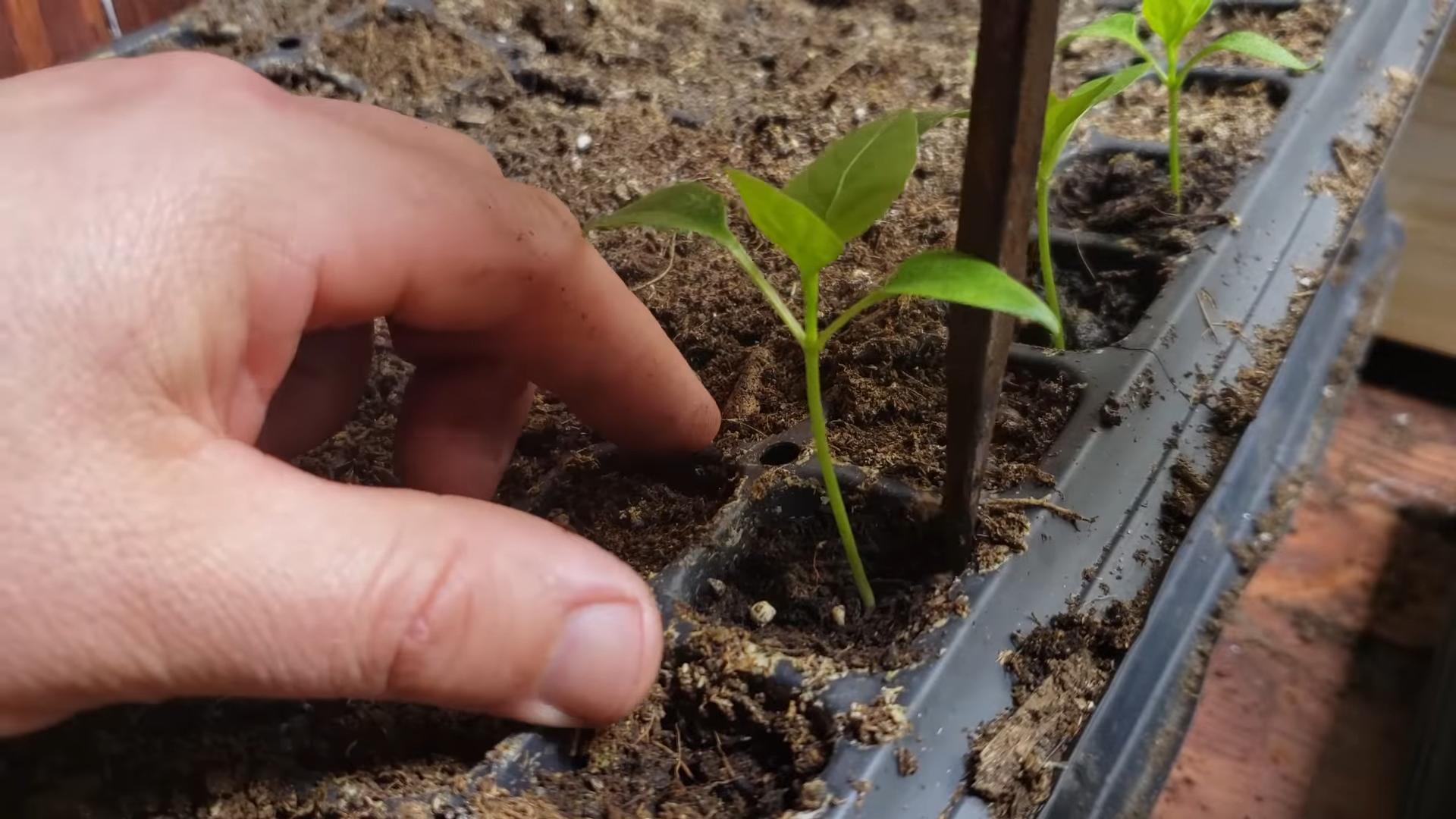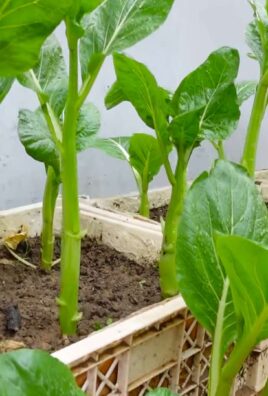Compact Home Garden Peppers: Dreaming of fresh, flavorful peppers straight from your backyard, even if you’re short on space? You’re not alone! For centuries, cultivating peppers has been a cherished tradition across cultures, from the spicy additions to ancient Mesoamerican cuisine to the vibrant flavors they bring to modern dishes worldwide. But what if you don’t have acres of land? That’s where the magic of compact home gardening comes in, and I’m here to show you how to grow your own delicious peppers, no matter how small your space is.
In today’s world, where access to fresh, healthy produce can be a challenge, learning how to grow your own food is more important than ever. Plus, let’s be honest, store-bought peppers just don’t compare to the taste of homegrown ones! This DIY guide is packed with simple, effective tricks and hacks to help you maximize your yield and enjoy a bountiful harvest of compact home garden peppers. Whether you’re a seasoned gardener or a complete beginner, I’ll walk you through everything you need to know, from choosing the right varieties to troubleshooting common problems. Get ready to transform your balcony, patio, or even a sunny windowsill into a thriving pepper paradise!

Creating Your Own Thriving Compact Home Garden for Peppers
Hey there, fellow gardening enthusiasts! I’m so excited to share my tried-and-true method for growing a bountiful pepper harvest, even if you’re short on space. This guide focuses on creating a compact home garden specifically designed for peppers, perfect for balconies, patios, or even a sunny windowsill. Get ready to enjoy fresh, flavorful peppers straight from your own little green oasis!
Choosing the Right Pepper Varieties
Before we dive into the nitty-gritty, let’s talk peppers! Not all peppers are created equal, especially when it comes to container gardening. We need to choose varieties that are naturally compact and well-suited for smaller spaces.
Here are some of my favorite compact pepper varieties:
* ‘Patio Fire’ Peppers: These are super compact and produce tons of small, hot peppers. They’re perfect for adding a kick to your dishes.
* ‘Sweet Palermo’ Peppers: These are long, sweet, and incredibly flavorful. They also tend to stay relatively compact.
* ‘Mini Bell’ Peppers: As the name suggests, these are miniature bell peppers that are perfect for snacking and stuffing.
* ‘Jalapeño M’: A more compact jalapeño variety that still packs a punch.
* ‘Thai Hot’ Peppers: These are small, prolific, and incredibly spicy. A little goes a long way!
* ‘Lunchbox’ Peppers: These come in a variety of colors and are sweet and crunchy, perfect for kids (and adults!).
When selecting your pepper varieties, consider your taste preferences, the amount of space you have, and the amount of sunlight your garden receives.
Gathering Your Supplies
Okay, now that we’ve chosen our pepper varieties, let’s gather our supplies. Here’s what you’ll need:
* Containers: Choose containers that are at least 12 inches in diameter and 12 inches deep. Peppers need room for their roots to grow. I prefer using fabric pots because they allow for better drainage and aeration.
* Potting Mix: Don’t use garden soil in your containers! It’s too heavy and doesn’t drain well. Instead, use a high-quality potting mix specifically formulated for containers. I like to use a mix that contains peat moss, perlite, and vermiculite.
* Pepper Seeds or Seedlings: You can start your peppers from seed or purchase seedlings from a local nursery. Starting from seed gives you more control over the varieties you grow, but seedlings are a quicker option.
* Fertilizer: Peppers are heavy feeders, so you’ll need to fertilize them regularly. I recommend using a balanced fertilizer with a ratio of 10-10-10 or 5-10-5. You can also use an organic fertilizer like compost tea or fish emulsion.
* Watering Can or Hose: You’ll need a way to water your peppers regularly.
* Trowel or Shovel: For planting your peppers.
* Plant Markers: To label your pepper varieties.
* Optional:
* Tomato Cages or Stakes: Some pepper varieties may need support as they grow.
* Mulch: To help retain moisture and suppress weeds.
* Grow Lights: If you don’t have enough natural sunlight.
Planting Your Peppers
Alright, let’s get our hands dirty! Here’s how to plant your peppers:
1. Prepare Your Containers: Fill your containers with potting mix, leaving about an inch of space at the top.
2. Plant Your Seeds or Seedlings:
* From Seed: Sow your pepper seeds about 1/4 inch deep and water gently. Keep the soil moist but not soggy.
* From Seedlings: Gently remove the seedlings from their containers and loosen the roots. Dig a hole in the potting mix that is large enough to accommodate the root ball. Place the seedling in the hole and backfill with potting mix. Water thoroughly.
3. Label Your Plants: Use plant markers to label each pepper variety. This will help you keep track of which peppers are which.
4. Mulch (Optional): Add a layer of mulch around your pepper plants to help retain moisture and suppress weeds.
5. Provide Support (Optional): If you’re growing pepper varieties that may need support, install tomato cages or stakes now.
Caring for Your Pepper Plants
Now that your peppers are planted, it’s time to care for them. Here’s what you need to do:
1. Watering: Water your pepper plants regularly, especially during hot, dry weather. Peppers need consistent moisture to thrive. Water deeply, allowing the water to soak into the soil. Avoid overwatering, as this can lead to root rot. I usually water when the top inch of soil feels dry to the touch.
2. Fertilizing: Fertilize your pepper plants every 2-3 weeks with a balanced fertilizer. Follow the instructions on the fertilizer package. You can also use an organic fertilizer like compost tea or fish emulsion.
3. Sunlight: Peppers need at least 6-8 hours of sunlight per day. If you don’t have enough natural sunlight, you can supplement with grow lights.
4. Pruning: Pruning isn’t strictly necessary for peppers, but it can help to improve air circulation and encourage bushier growth. You can prune away any yellowing or dead leaves.
5. Pest and Disease Control: Keep an eye out for pests and diseases. Common pepper pests include aphids, spider mites, and whiteflies. Common pepper diseases include blossom end rot and fungal infections. If you notice any pests or diseases, take action immediately. You can use insecticidal soap or neem oil to control pests. For diseases, you can use a fungicide.
6. Pollination: Peppers are self-pollinating, but you can help them along by gently shaking the plants or using a small paintbrush to transfer pollen from one flower to another. This is especially important if you’re growing peppers indoors.
Harvesting Your Peppers
The best part of growing peppers is harvesting them! Here’s how to know when your peppers are ready to pick:
1. Color: Peppers will change color as they ripen. The color will depend on the variety. For example, bell peppers will turn from green to red, yellow, or orange.
2. Firmness: Ripe peppers will be firm to the touch.
3. Size: Peppers will reach their mature size.
4. Taste: The best way to know if a pepper is ripe is to taste it!
To harvest your peppers, simply cut them from the plant with a sharp knife or scissors. Be careful not to damage the plant.
Troubleshooting Common Pepper Problems
Even with the best care, you may encounter some problems when growing peppers. Here are some common problems and how to fix them:
* Blossom End Rot: This is a condition that causes the bottom of the pepper to rot. It’s caused by a calcium deficiency. To prevent blossom end rot, make sure your soil is rich in calcium and water your plants consistently. You can also add calcium to the soil by using bone meal or eggshells.
* Aphids: These are small, sap-sucking insects that can damage pepper plants. To control aphids, you can use insecticidal soap or neem oil.
* Spider Mites: These are tiny pests that can cause yellowing and stippling on pepper leaves. To control spider mites, you can use insecticidal soap or neem oil.
* Whiteflies: These are small, white, flying insects that can damage pepper plants. To control whiteflies, you can use insecticidal soap or neem oil.
* Fungal Infections: These can cause spots, lesions, and wilting on pepper plants. To prevent fungal infections, make sure your plants have good air circulation and avoid overwatering. You can also use a fungicide.
Extending Your Pepper Season
Want to enjoy fresh peppers for even longer? Here are a few tips for extending your pepper season:
* Start Seeds Indoors: Start your pepper seeds indoors 6-8 weeks before the last frost. This will give you a head start on the growing season.
* Use Row Covers: Row covers can protect your pepper plants from frost and cold weather.
* Bring Plants Indoors: If you live in an area with cold winters, you can bring your pepper plants indoors to overwinter them. Place them in a sunny location and water them regularly.
* Succession Planting: Plant new pepper plants every few weeks to ensure a continuous harvest throughout the season.
Enjoying Your Homegrown Peppers
Now that you’ve harvested your peppers, it’s time to enjoy them! Here are a few ideas:
* Eat them fresh: Peppers are delicious eaten fresh in salads, sandwiches, and dips.
*

Conclusion
So, there you have it! Transforming your limited space into a thriving pepper paradise is not only achievable but incredibly rewarding. This DIY trick for cultivating compact home garden peppers is more than just a gardening hack; it’s a gateway to fresh, flavorful produce right at your fingertips, regardless of whether you have a sprawling backyard or just a sunny balcony.
Why is this a must-try? Because it democratizes gardening. It removes the barriers of space and perceived complexity, allowing anyone, anywhere, to experience the joy of nurturing their own food. Imagine the satisfaction of harvesting vibrant peppers, knowing you grew them yourself, using a simple, effective method. The taste difference alone, between store-bought and homegrown, is enough to convert anyone. Plus, you control exactly what goes into your plants, ensuring organic, healthy peppers for your table.
But the benefits extend beyond just taste and health. Gardening is therapeutic. It’s a chance to connect with nature, to slow down, and to nurture something. This compact pepper gardening method offers all those benefits in a manageable, accessible way. It’s a stress reliever, a hobby, and a source of fresh ingredients all rolled into one.
Don’t be afraid to experiment! This method is incredibly adaptable. Try different varieties of peppers – from sweet bell peppers to fiery habaneros – to discover your favorites. Consider companion planting, adding herbs like basil or rosemary to your containers to deter pests and enhance flavor. You can also adjust the size of your containers to suit your available space and the specific needs of your chosen pepper variety. For example, smaller chili peppers might thrive in slightly smaller pots than larger bell peppers.
Furthermore, think about your lighting conditions. If you don’t have a naturally sunny spot, consider investing in grow lights to supplement the sunlight and ensure your peppers get the energy they need to flourish. Remember to rotate your plants regularly to ensure even light exposure.
We encourage you to embrace this DIY trick and embark on your own compact pepper gardening adventure. It’s easier than you think, and the rewards are immeasurable. The vibrant colors, the fresh aromas, and the delicious flavors of homegrown peppers are waiting for you.
Now, we want to hear from you! What varieties of peppers are you planning to grow? What challenges are you anticipating? What successes have you already experienced? Share your stories, your tips, and your photos in the comments below. Let’s build a community of compact pepper gardeners, sharing our knowledge and inspiring each other to grow more, eat healthier, and connect with nature. Your experience could be exactly what someone else needs to take the plunge and start their own pepper garden. So, get planting, get sharing, and get ready to enjoy the fruits (or rather, the peppers!) of your labor!
Frequently Asked Questions (FAQ)
What is the best type of pepper to grow in a compact home garden?
The best type of pepper depends on your personal preferences and the space you have available. Smaller pepper varieties like chili peppers, bell peppers (especially dwarf varieties), and sweet peppers tend to thrive in containers. Hot peppers like habaneros and jalapeños also do well in pots. Consider the size of the mature plant when choosing your variety. Look for “compact” or “dwarf” varieties specifically bred for container gardening. Also, think about your climate. Some peppers prefer warmer temperatures than others. Research the specific needs of your chosen variety to ensure success.
How much sunlight do my compact home garden peppers need?
Peppers are sun-loving plants and require at least 6-8 hours of direct sunlight per day. If you don’t have a spot that receives that much sunlight, consider using grow lights to supplement. Insufficient sunlight can lead to leggy growth, reduced flowering, and smaller, less flavorful peppers. If using grow lights, position them close enough to the plants to provide adequate light intensity, but not so close that they burn the leaves.
What type of soil should I use for my compact home garden peppers?
Use a well-draining potting mix specifically formulated for containers. Avoid using garden soil, as it can become compacted in pots and doesn’t drain well. A good potting mix will provide adequate aeration and drainage, which are essential for healthy root growth. You can also amend your potting mix with compost or other organic matter to improve its fertility and water-holding capacity.
How often should I water my compact home garden peppers?
Water your peppers regularly, especially during hot, dry weather. The soil should be kept consistently moist, but not waterlogged. Check the soil moisture by sticking your finger about an inch into the soil. If it feels dry, it’s time to water. Overwatering can lead to root rot, so be sure your containers have drainage holes. Water deeply, allowing the water to drain out of the bottom of the pot.
Do I need to fertilize my compact home garden peppers?
Yes, peppers are heavy feeders and benefit from regular fertilization. Use a balanced fertilizer specifically formulated for vegetables. Follow the instructions on the fertilizer package for application rates and frequency. You can also use organic fertilizers like compost tea or fish emulsion. Fertilize regularly throughout the growing season to ensure your peppers have the nutrients they need to produce abundant fruit.
How do I prevent pests and diseases in my compact home garden peppers?
Prevention is key! Start with healthy plants and use a good quality potting mix. Inspect your plants regularly for signs of pests or diseases. Common pests include aphids, spider mites, and whiteflies. You can control these pests with insecticidal soap or neem oil. Diseases can be prevented by providing good air circulation and avoiding overwatering. If you notice any signs of disease, remove the affected leaves or plants immediately. Companion planting with herbs like basil or rosemary can also help deter pests.
How do I know when my peppers are ripe?
The color of the pepper is a good indicator of ripeness. Bell peppers typically turn from green to red, yellow, or orange when ripe. Hot peppers may change color as well, depending on the variety. The pepper should also feel firm and slightly heavy for its size. You can also taste a small piece of the pepper to check for ripeness.
Can I grow compact home garden peppers indoors?
Yes, you can grow peppers indoors, but you’ll need to provide them with adequate light. A sunny south-facing window is ideal, but you may still need to supplement with grow lights. Indoor peppers may also require more frequent watering and fertilization. Be sure to provide good air circulation to prevent diseases.
How do I overwinter my pepper plants?
If you live in a cold climate, you can overwinter your pepper plants indoors. Before the first frost, prune the plants back to about 6 inches tall and repot them into fresh potting mix. Bring the plants indoors and place them in a sunny location. Water sparingly during the winter months. In the spring, gradually acclimate the plants to outdoor conditions before transplanting them back into your garden.
What are some common problems when growing compact home garden peppers and how do I fix them?
Some common problems include blossom end rot (caused by calcium deficiency), leaf curl (caused by aphids or other pests), and stunted growth (caused by insufficient sunlight or nutrients). Blossom end rot can be prevented by adding calcium to the soil. Leaf curl can be treated with insecticidal soap or neem oil. Stunted growth can be corrected by providing more sunlight and fertilizer. Always diagnose the problem accurately before attempting to fix it.





Leave a Comment